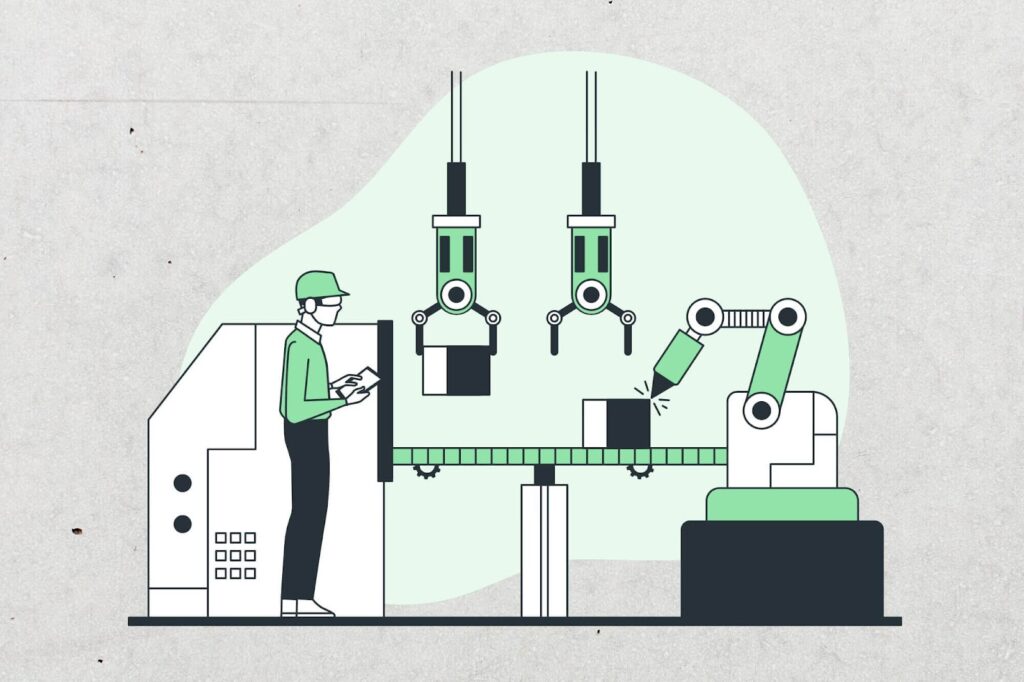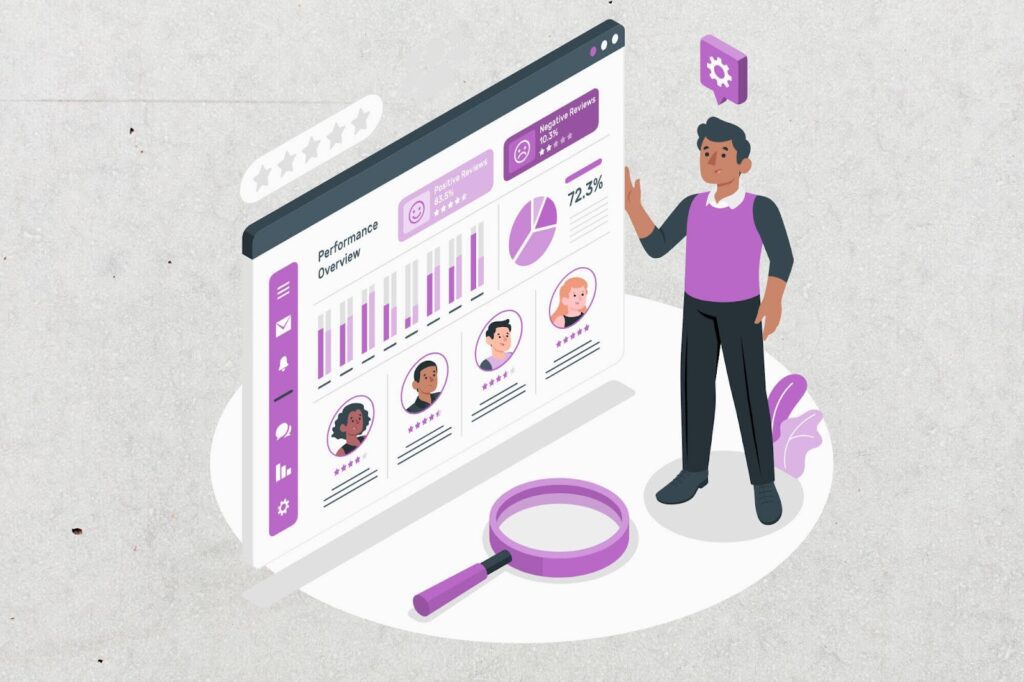






Quick Overview
Technology in business is a cornerstone of growth, innovation, and resilience, helping companies adapt in a fast-paced world. It improves efficiency, strengthens collaboration, drives innovation, enhances customer experiences, and ensures security.
This guide covers:
✅ Automation, cloud tools, and project management software that streamline operations and boost productivity
✅ Communication platforms and collaboration tools that connect teams and encourage knowledge sharing
✅ AI, machine learning, and big data that fuel innovation and provide a competitive edge
✅ CRM systems, chatbots, and analytics that personalise customer experiences and improve support
✅ Cybersecurity, cloud infrastructure, and disaster recovery that safeguard data and ensure business continuity
Technology in business plays a vital part of today's business landscape, driving business growth, innovation, and efficiencies across all sectors. As businesses continue to digitalise their operations to stay competitive, it is crucial to understand why and how technology matters. This blog will discuss the top five reasons for the importance of technology to all businesses, regardless of the industry, and how it is helping them survive and succeed in this fast-paced world.
Technology, by automating some of the mundane and time-consuming tasks that businesses often need to perform, can be very useful. Through a series of automation tools, such as project management software, Customer Relationship Management (CRM) systems or other forms of business software, firms can monitor project progress and customer interactions, helping to eliminate manual errors and save time. For example, tools such as Asana or Trello allow teams to manage project tasks and deadlines and track progress in a single place, effectively eliminating the need for constant manual updates and status meetings. Similarly, a CRM system can help firms manage customer interactions, sales data, and marketing campaigns in one place, leading to better organisation and more effective interactions with customers.
Another technology that improves workflow efficiency is automation platforms, such as Zapier and Microsoft Power Automate, that connect different applications and, using data and commands, automate repetitive tasks. Data entry and notifications can be automatically transferred, for example, and reports can be compiled and shared without human intervention. By using these tools, businesses can free employees from completing mundane tasks to focus on more challenging and productive ones while still reducing operating costs. These tools can integrate into daily work processes to allow tasks to be completed more quickly and with greater accuracy and consistency.
At the same time, technology increases employee productivity by equipping employees with tools that help them access information and collaborate more efficiently. The advent of cloud computing has enabled employees to access files, applications, and data from anywhere, anytime, and on any device. This has not only improved work-life balance and allowed for remote work but also enabled a more flexible and agile working style. Microsoft 365 and Google Workspace are two examples of cloud-based tools that allow employees to work together on the same document, spreadsheet or presentation in a real-time and remote manner.

It is also crucial for businesses to provide their employees with communication tools such as Slack, Microsoft Teams and Zoom, which allow instantaneous messaging and video conferencing, making it possible for employees to keep in touch and share files in real-time. Problems can be solved right away, thus reducing the time it takes to make decisions, helping employees connect as a team, and leading to more timely completion of projects. By providing team members with the right technological tools, businesses can help employees better collaborate and innovate, increasing productivity and job satisfaction.
Good business communication underpins all of the above, and it can only function with the right technology. Back in the day, business communication was often just about 'communication'. Emails were limited, and employees were required to conduct meetings in person. Now, many companies use instant messaging applications like Slack and Microsoft Teams to send updates and communicate in real-time, all in one place. Channels are created for teams, projects or topics, and information can be collected and accessed instantly. Communications can flow faster, and decision-making can, too, be sped up.
Video conferencing software, such as Zoom, Google Meet, and Microsoft, allows businesses to conduct face-to-face discussions among participants who don't need to be in the same place for the meeting physically. This is an especially useful tool in our increasingly remote work environments, where teams may be spread across various locations. Intranets and internal social networks also serve as avenues for enhanced communication because they offer a centralised place where employees can access company news, policies, and resources, which helps create a shared sense of community and togetherness.
Collaboration is essential to innovation and business outcomes, and technology has made it easier than ever for teams to work together, regardless of where they are located. Cloud-based document-sharing services such as Google Drive, Dropbox and OneDrive allow team members to access, edit and share documents in real-time. These services provide version control so that team members work on the latest version of the document, helping to avoid errors and duplication. Collaborative project management tools such as Asana, Trello, and Monday.com help teams work together by allowing them to assign tasks, set deadlines, and track progress in a transparent and organised manner.

Version control systems, such as Git and GitHub, for example, enable multiple developers to work on a single codebase at the same time, with the ability to track changes, create different versions of code, and allow developers to work with one another even remotely. A world filled with collaborative tools that are embedded in the day-to-day flow of work can not only help teams boost their productivity but also encourage knowledge-sharing and innovation. Removing silos that hinder true collaboration and the ability for teams to work together in real-time can help teams be successful and ultimately help organisations prosper.
Innovation is the lifeblood of any successful business, and technology is essential for driving a culture of innovation. By giving businesses access to new tools, data, and methods, technology can help them experiment with new ideas, come up with innovative products, or improve processes. Artificial Intelligence (AI) and Machine Learning (ML) have created new capabilities for businesses to work with large amounts of data, identify patterns and make data-driven decisions. They can be used to optimise supply chains, personalise customer experiences and predict market trends, giving businesses an edge over their competitors.
Big Data is another technological innovation that has enabled companies to work smarter. By converting large sets of data into useful information about customers, the market, and the company's operations, the world of data analytics has helped to make more informed business decisions. This has enabled the company to modify its products and services to meet the demands of its customers and even identify new opportunities for business growth. The capacity to innovate through technology is a key factor towards business success and a way to stay in front of the pack in a competitive market.
In the current competitive business environment, the best way to have an advantage over competitors is to adopt the latest technologies. Businesses can differentiate themselves based on the types of products and services they provide to customers.

Businesses that use AI or automation can provide better customer service as their response to customer demand will be faster. This is because there is less chance of human error when such technology is used. This, in turn, increases customer satisfaction and customer loyalty.
Furthermore, businesses that use e-commerce platforms and digital marketing tools to reach their customers can have better audience engagement. They will also have a higher turnover and improve their brand image among consumers.
In conclusion, today the use of the latest technology in business will provide with an edge over competitors. This allows businesses to adapt to these fast-paced modern times and continue to thrive.
Many companies have used technology to beat their competitors, and this is possible through the use of AI. For example, Amazon has a system that makes personalised recommendations to customers. At the same time, the company's use of AI in logistics has created better supply chains, allowing it to stay ahead of competition in the e-commerce business. Netflix, too, uses data to make decisions about content and also has a recommendation engine for customers. These examples show how technology can be crucial in making businesses successful and dominant.
In a highly competitive marketplace, personalised customer interactions provide companies with an opportunity to stand out. By leveraging detailed customer insights, technology allows companies to interact with their customers in more personalised ways that can enhance the customer experience. To achieve this, Customer Relationship Management (CRM) systems, such as Salesforce or HubSpot, collect and analyse customer data that can include anything from purchase history to customer preferences and behaviours. This data can then be exploited to send personalised marketing campaigns and product recommendations or tailor offers to individual customers.
Personalisation is also a powerful tool that improves the customer experience. This can be done through AI-powered chatbots that can give real-time personalised responses to customer queries based on the context of the conversation. The AI-powered chatbot can provide suggestions or solutions based on the conversation, making the customer feel that they are being understood. Similarly, data analytics-based, and AI-powered personalised marketing without the need for human involvement can deliver targeted content and offers to specific customer segments, significantly improving engagement and conversion. These technologies, which can improve customer satisfaction and boost loyalty and repeat business, are powerful tools for businesses.

By utilising technology, providing customer support has become more responsive, efficient and customer-friendly. Live chat, helpdesk software and social media are examples of how technology can offer real-time customer service to customers in one-on-one communication settings. Live chat tools are an excellent example of how technology can assist customers. Websites can be equipped with live chat tools, such as Intercom or Zendesk Chat so that customers can connect with their support agents instantaneously. This method of support can circumvent the nuisance of phone calls and long wait times. Additionally, the live chat feature is more likely to resolve customer issues during initial contact than other modes of communication.
Freshdesk and Jira Service Management are examples of helpdesk software that can help a business centralise the work of responding to customers, logging issues, and resolving them in a timely manner. This software can include features such as automated ticketing systems, knowledge bases and multi-channel support to help companies offer consistent and reliable customer service across multiple points of interaction. Social media, such as Twitter and Facebook, are also key channels for customer support where businesses can engage with customers where they're already active. These technologies can help businesses develop stronger relationships with customers, enhance their reputation and ensure that their support services are tailored to the evolving needs of today's consumers.
In the age of data breaches, when cyber attacks are becoming more common and frequent, it is of vital importance for any technology in business of any size to protect its sensitive business data from unauthorised access, theft or destruction. Technology plays a key role in this regard. Cybersecurity tools, such as firewalls, antivirus software and intrusion detection systems, are necessary to defend against external threats. Furthermore, the use of encryption technologies keeps sensitive information, whether stored or transmitted, safe and inaccessible to anyone other than the intended users.
Another practice that any discussion of data protection should include is data backups. Keeping copies of data in secure cloud storage or offsite locations should be automated to make sure that it is done as regularly as necessary and when needed. Access controls, including multi-factor authentication and role-based access controls, are another crucial component of robust data protections that should be implemented, especially in cases of sensitive personal information. The costs of these technologies can be high, but the advantages are even higher. The use of technology in Business will be able to safeguard their precious data assets, as well as their customers' trust and the expectations of regulatory bodies. They'll be less likely to pay the high price of a data breach by ensuring that security breaches never occur in the first place.

If you own a business, you want it to survive and thrive through disruptions, using networked technology infrastructure to keep operations going or recover faster. In the face of a natural disaster – a hurricane, a flood, a pandemic – it's technology that keeps businesses up and running. It helps you reach customers, process orders, and keep valuable assets safe. Cloud computing provides a flexible and scalable solution to maintain access to critical systems and data from anywhere. Suppose you run your company from a centralised building. In that case, you can migrate to the cloud so that your workers can work from home, access the same systems and documents, and collaborate as if they were in the office.
Remote work tools, such as VPNs, collaboration software such as Microsoft Teams or Slack, and cloud-based applications allow employees to continue to work from home or another location. At the same time, connectivity issues are being resolved, enabling the business to continue operating uninterrupted. Disaster recovery plans that use technology (such as automated failover) allow companies to continue operations after data loss. For example, after a hurricane like Dorian, a bank is able to recover its systems and resume operations quickly, minimising the impact on customers. In this way, technologies can help build business resilience, protect operations and facilitate meeting customer needs, even in the face of significant challenges.
Nowadays, technology in business plays a vital role because it helps companies to be faster, better, more innovative, and interactive, create a better customer experience and, most importantly, increase security. While it's important to accept new technology and implement it into your business, you have to do it strategically to stay ahead of the competition and be a dominant player in your industry. By using the right tools, companies can help sustain the growth of their business, complete tasks more efficiently and improve security.